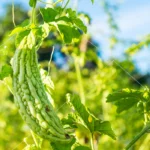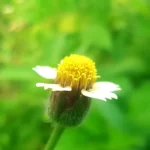Vadamalli flowers, with their vibrant and captivating beauty, have a special place in the world of horticulture. Also known as Globe Amaranth or Gomphrena globeosa, these bushy flowers come in a mesmerizing range of colors and have a multitude of uses. In this article, we will delve into the enchanting world of Vadamalli flowers, exploring their cultivation methods and the myriad benefits they offer. So, let’s embark on this delightful journey!
The Enigmatic Vadamalli: A Flower of Endless Charm
Vadamalli flowers have a rich history and fascinating cultural significance. These blossoms, often seen in bouquets of mixed flowers, symbolize eternal love and immortality due to their ability to retain their vibrant colors even after drying. They belong to the family of Amaranthaceae and are widely used in various cuisines around the world. One popular way to enjoy the benefits of Vadamalli is through amaranth tea, known for its light crimson hue and potential to reduce wrinkles and promote flawless skin.

Unveiling the Marvels of Vadamalli Flowers
Vadamalli flowers are known by different names across cultures. In Guianas, the white-flowered variety is used as a diabetes treatment, while in Nepal, it is called Makhamali or ful, and garlands made of these flowers are used during Bhai Tika. These stunning flowers contain betacyanins, which are extensively utilized in the cosmetic and food industries as organic red and purple dyes.

Varieties of Vadamalli: Nature’s Artistry at Its Finest
Vadamalli flowers display an exquisite array of colors and forms. Let’s explore some of the captivating varieties:
- Bicolor Rose: With its deep lavender color and white cap, this variety emanates elegance.
- Strawberry Fields: Adorned in bright red, these globular flowers are commonly used in mixed bouquets.
- Purple Amaranth: This deep purple or magenta variety finds its place in both cooking and soil conditioning.

- Lavender Lady: These warm and tropically scented flowers feature pseudo-spherical heads, adding a touch of charm to any garden.
- Fireworks: Sparkling pink flowers atop long stems, embellished with bright yellow, create a truly captivating spectacle.

Cultivating Vadamalli Flowers: A Journey of Growth
If you’re eager to witness the enchanting beauty of Vadamalli flowers in your own garden, follow these simple cultivation tips:
- Selecting the Ideal Spot: Choose a location that receives full sun, allowing the flowers to bask in its warmth and radiance.
- Preparing the Soil: Ensure the soil has good drainage, whether it’s sandy loam or clay. Adjust the pH to 6.1-7.5 by adding compost to increase acidity or lime to reduce it.
- Planting the Seeds: Plant Vadamalli seeds about one-eighth of an inch deep, spacing them 4-6 inches apart. Lightly cover them with soil and provide adequate water at temperatures between 21 to 25 °C.
- Nurturing the Seedlings: Prior to transferring the seedlings outdoors, allow them to grow strong indoors for six to eight weeks. Once they are sturdy, transplant them into your garden, ensuring they receive sufficient sunlight.
- Watering and Maintenance: Vadamalli flowers are relatively drought-resistant, but regular watering is essential for their health. Water the soil directly, as wet leaves can lead to fungal growth. Thin the seedlings to 12-18 inches apart to ensure proper air circulation and prevent overcrowding.
- Fertilizing: Apply a balanced fertilizer once every four to six weeks to promote healthy growth and abundant blooms. Organic options such as compost or well-rotted manure can also be used.
- Pruning: Regularly prune the Vadamalli plants to maintain their shape and encourage bushier growth. Pinch off the dead flowers to promote continuous blooming.
- Pest and Disease Control: Keep an eye out for common pests like aphids or spider mites. Use organic insecticides or neem oil to control infestations. Ensure good air circulation and avoid overwatering to prevent fungal diseases.
- Harvesting: Vadamalli flowers can be harvested when they are fully open and at their peak of vibrancy. Cut the stems just above a leaf node, as this encourages new growth and additional blooms.
- Drying and Preservation: To preserve the beauty of Vadamalli flowers, you can air-dry them by hanging them upside down in a dry, well-ventilated area. Once dried, they can be used in various crafts, potpourri, or floral arrangements

Benefits of Vadamalli Flowers: Beauty and Beyond
Apart from their aesthetic appeal, Vadamalli flowers offer several benefits:
- Medicinal Uses: In traditional medicine, Vadamalli flowers are known for their anti-inflammatory, diuretic, and antioxidant properties. They are used to treat ailments like coughs, sore throats, and digestive issues.
- Culinary Delights: Vadamalli flowers are edible and can be used in various culinary creations. They are often used as a garnish, infused in syrups, or added to salads and beverages.
- Cosmetic Applications: The betacyanins present in Vadamalli flowers are used in the cosmetic industry as natural dyes for lipsticks, blushes, and other beauty products. Amaranth tea derived from these flowers is believed to promote youthful skin.
- Symbolism and Decor: Vadamalli flowers hold symbolic value in different cultures. They are used in religious ceremonies, weddings, and festivals as garlands, decorations, and offerings.
- Biodiversity and Pollinators: Growing Vadamalli flowers in your garden can attract pollinators like bees and butterflies, contributing to the overall biodiversity of your surroundings.
Frequently Asked Questions (FAQs) about Vadamalli Flowers (Gomphrena globosa)
When to sow Gomphrena seeds in India?
Answer: The best time to sow Gomphrena seeds in India is during the spring season, when the temperatures are mild and frost is no longer a concern. Typically, this would be around February to March in most regions. However, it’s important to consider the specific climatic conditions of your area. Gomphrena plants thrive in warm weather, so ensure that the soil temperature is consistently above 60°F (15°C) before sowing the seeds.
When to harvest Gomphrena?
Answer: Gomphrena flowers can be harvested when they are fully mature and have reached their peak vibrancy. The timing for harvesting can vary depending on the specific variety of Gomphrena and the intended use of the flowers. For fresh flower arrangements, it’s best to harvest them when the blooms are fully open and colorful. On the other hand, if you wish to dry the flowers, harvest them when they are still in bud or just beginning to open. This will ensure that the flowers retain their shape and color during the drying process.
Does Gomphrena reseed?
Answer: Yes, Gomphrena has the ability to reseed itself under favorable conditions. After the flowers fade and dry up, they produce small seeds that can drop to the ground. These seeds may germinate and grow into new Gomphrena plants the following season. If you want to encourage natural reseeding, you can allow a few flowers to dry on the plant and scatter their seeds. However, keep in mind that Gomphrena can also spread vigorously if not controlled, so it’s important to monitor its growth and prevent it from becoming invasive.
What colors do we have in Gomphrena?
Answer: Gomphrena comes in a wide range of vibrant colors, adding a delightful splash to your garden or floral arrangements. Some popular colors available in Gomphrena include:
- Purple: This shade of Gomphrena adds a touch of regal beauty to any setting.
- Pink: Pink Gomphrena flowers bring a soft and charming ambiance to gardens and bouquets.
- Red: The rich red hue of Gomphrena flowers makes a bold statement and adds warmth to floral arrangements.
- White: White Gomphrena exudes elegance and purity, creating a serene and calming effect.
- Orange: Orange Gomphrena blooms radiate energy and cheerfulness, infusing a vibrant touch to your garden.
What is Gomphrena globosa called in Hindi?
Answer: In Hindi, Gomphrena globosa is commonly known as “Gul Mehandi” or “Gul Makhmalli.”

How to grow Vadamalli plants?
Answer: Growing Vadamalli plants, also known as Gomphrena globosa, is a rewarding experience. Follow these steps to cultivate them successfully:
- Seed Starting: Start by sowing Gomphrena seeds indoors during late winter or early spring. Use a well-draining seed-starting mix and lightly press the seeds into the soil’s surface. Keep the soil moist and maintain a temperature around 70-75°F (21-24°C) for optimal germination.
- Transplanting: Once the seedlings have developed a few sets of true leaves and all risk of frost has passed, transplant them outdoors in a sunny location. Ensure proper spacing between plants to allow for healthy growth.
- Soil Preparation: Prepare the soil by incorporating organic matter such as compost or well-rotted manure. Gomphrena prefers a fertile, well-draining soil with a slightly acidic to neutral pH level (around 6.0-7.0).
- Watering: Water the plants regularly to keep the soil evenly moist but not waterlogged. Avoid overwatering, as Gomphrena is relatively drought-tolerant and excessive moisture can lead to root rot.
- Sunlight Requirements: Vadamalli plants thrive in full sunlight. Make sure they receive at least 6-8 hours of direct sunlight each day for optimal growth and abundant blooms.
- Fertilizing: Apply a balanced fertilizer every four to six weeks to promote healthy growth and prolific flowering. Organic options such as compost or well-rotted manure can also be used.
- Pruning: Regularly prune the plants to maintain their shape and encourage bushier growth. Remove faded flowers to promote continuous blooming and extend the flowering period.
- Pest and Disease Control: Monitor for common pests like aphids or spider mites. Use organic insecticides or neem oil to control infestations. Proper air circulation and avoiding overwatering can help prevent fungal diseases.
The world of Vadamalli flowers is truly enchanting, from their captivating beauty to their wide range of uses. Whether you cultivate them for their vibrant blooms, culinary ventures, or medicinal properties, these versatile flowers are sure to bring joy and fascination to your garden and beyond. So, embrace the allure of Vadamalli and embark on a delightful journey of horticultural enchantment!
We at Shehri Kisaan are delighted to offer you an extensive range of fertilizers, soils, and soil amendments tailored to meet the diverse needs of avid gardeners like yourself. Our mission is to provide you with the essential tools and resources you need to nurture and care for your flowering plants with utmost professionalism.
Whether you are an experienced gardener or just beginning your horticultural journey, our premium selection of fertilizers is designed to cater to every stage of your plant’s growth. From specialized formulas that promote vibrant blooms to nutrient-rich blends that enhance overall plant health, our offerings are carefully curated to deliver optimal results.
In addition to our top-quality fertilizers, we also provide a wide variety of soils and soil amendments. We understand the critical role that soil plays in plant development, which is why we offer a range of options to suit different plant species and growth requirements. Our meticulously sourced soils and targeted amendments are formulated to enhance soil fertility, structure, and moisture retention, creating the perfect environment for your flowering plants to thrive.
At ShehriKisaan.com, we take great pride in our commitment to delivering professional-grade products that yield exceptional results. Our team of experts is dedicated to providing you with expert advice, guidance, and unparalleled customer service to ensure that your gardening endeavors are a resounding success.
We invite you to visit our website today and explore our extensive collection of fertilizers, soils, and soil amendments. Discover the difference that professional-grade products can make in your gardening journey. With ShehriKisaan.com, you can embark on a fulfilling and rewarding experience of nurturing and beautifying your flowering plants.








